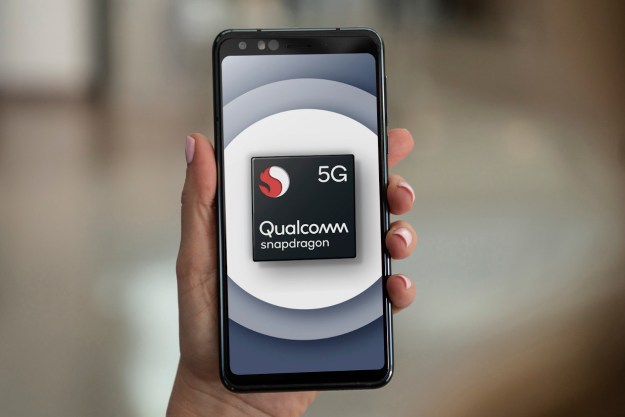
If you’re still dreamily looking forward to the Snapdragon 805 processor, due for release later this year, then Qualcomm has just given you something else to get excited about – it’s first 64-bit mobile processors, the Snapdragon 810 and the Snapdragon 808. However, before you cancel your order for the Galaxy S5 or HTC One M8, you should know these chips aren’t going to be out until 2015.
The Snapdragon 810 is Qualcomm’s heavy hitter. Qualcomm calls it the “highest performing Snapdragon platform to date,” but interestingly, the press release avoids talking about cores and speeds. Instead, we get a rundown of the more technical benefits the chip will bring. Headed for premium hardware, it promises improved stills and video camera performance, with support for HDR video, gyro-stabilzation, image sensors up to 55-megapixels, and 4K video recording.
On the subject of 4K resolutions, the new Adreno 430 graphics processor is specially designed for these next-generation displays, while also boosting overall performance by 30 percent compared to the Adreno 420. The good news is it does all this more efficiently, and cuts power consumption by 20 percent, too.
If the Snapdragon 810 lives up to its promise, it’ll deliver faster Wi-Fi, and in the right places, faster 4G LTE connections as well. Other features include USB 3.0 support, NFC, Bluetooth 4.1, and the introduction of even quicker LPDDR4 memory. This is an important addition. Processors using 64-bit technology require plenty of memory to function at their best.
Qualcomm’s second high-end 64-bit chip is the Snapdragon 808. It will also offer the same Wi-Fi and 4G LTE speed benefits, but it uses a different graphics processor, and LPDDR3 memory. The graphics chip is designed for 2560 x 1600 pixel resolutions, which Qualcomm calls 2K.
However, exciting as these two new processors are, they’re also almost a year from seeing the inside of a phone. Why is Qualcomm talking about its next-gen chips so early? It could be feeling some pressure from MediaTek, Samsung and perhaps even Intel, forcing it to show its hand now. In the meantime, we’ll look forward to the Snapdragon 805.
Editors' Recommendations
- Qualcomm is about to make cheap Android phones better than ever
- Here are Qualcomm’s latest processors and new AR glasses
- How kids and seniors prompted Qualcomm to heavily invest in wearables
- The Qualcomm Snapdragon 778G brings premium features to a cheaper chip
- Google and Qualcomm are making Android updates faster, supporting them longer




